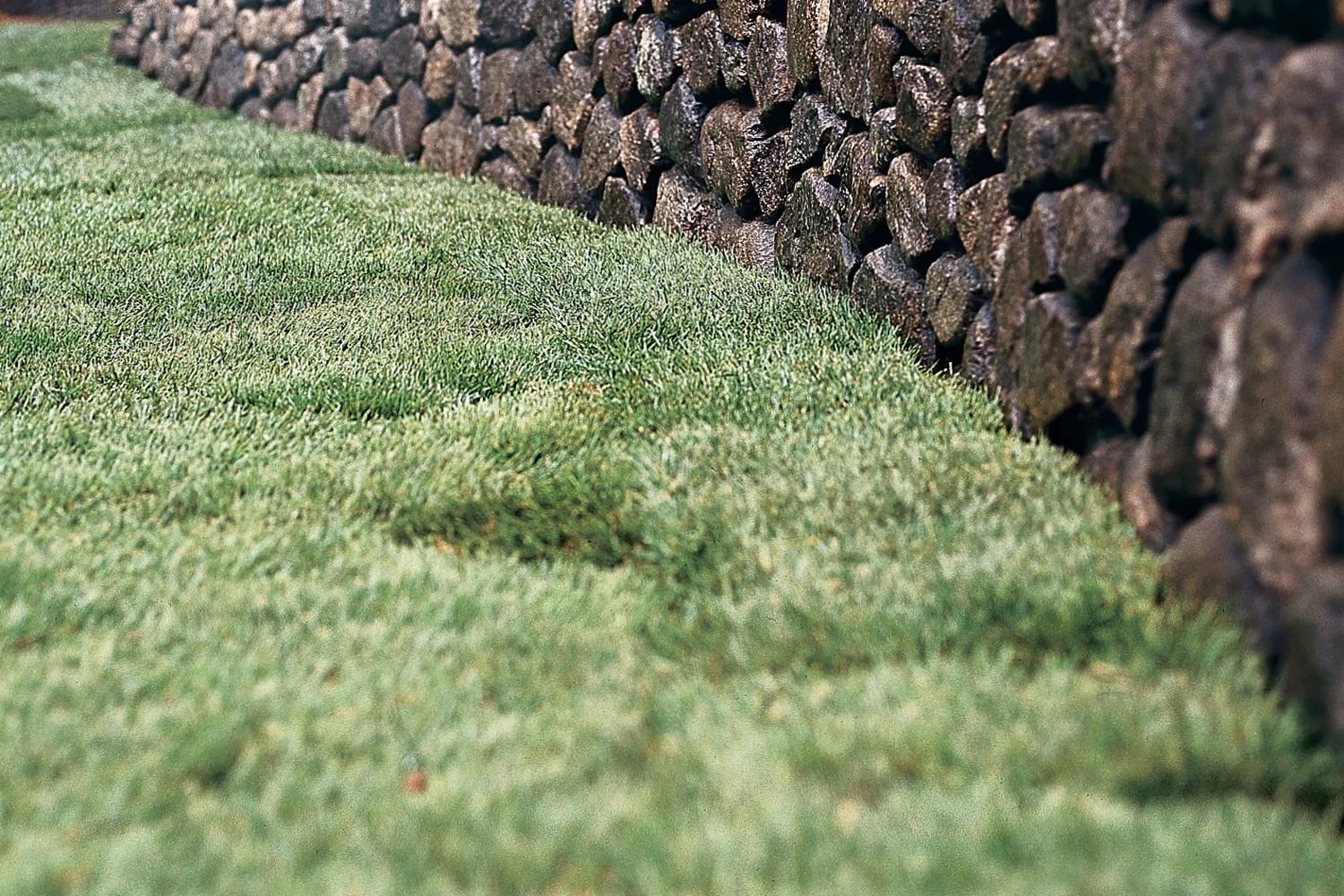Project details
Skill
Cost
Estimated Time
Installing sod is a great way to achieve a lush, green lawn. While it costs more upfront than seeding, it provides instant results and turf that’s resistant to weeds, diseases, and pests. Our guide walks you through the sodding process, from soil preparation to post-installation care.
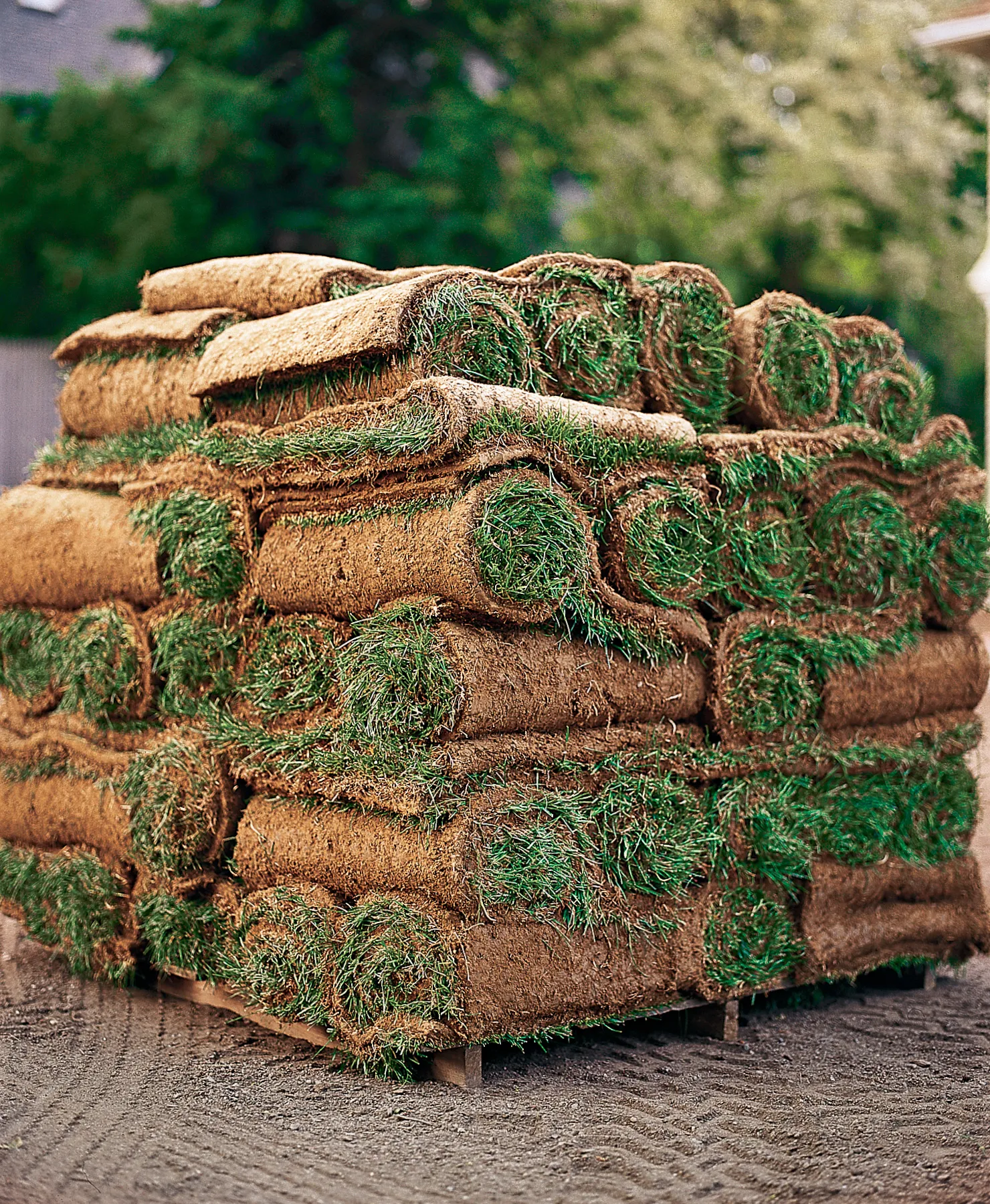
Assessing Your Lawn: Soil Testing and Preparation
Sod can be laid during most of the year, even during winter in milder climates. Before laying it, assess your current lawn conditions and prepare the ground. This process involves two key steps: conducting a soil test and removing existing grass.
Conducting a Soil Test
A soil test is helpful for understanding the composition and nutrient content of your soil. Turf thrives in well-aerated, slightly acidic soil with a pH between 6 and 7.5. For less than $20, your local extension service can analyze a soil sample and provide detailed recommendations for its care. This information is necessary to create ideal growing conditions for your new sod.
Removing Existing Grass
If your yard has patchy grass, it needs to be removed with a sod cutter before laying new material down. The most efficient way is with a sod cutter, which can be rented from a local equipment rental company. This machine slices off the existing grass below the roots, preparing a clean slate for your new lawn.
Best Tools and Materials for Sodding
To successfully install sod, you’ll need several tools and materials. Here’s a list of essentials:
- Compost (if needed)
- Fertilizer spreader
- Iron rake
- Lime (if needed)
- Rototiller (for loosening soil)
- Sod cutter (for removing existing grass)
- Sod-cutting knife with a 2-inch blade
- Sprinkler or irrigation system
- Starter fertilizer
Preparing the Ground for Sod Installation
Ground preparation is key for your new sod’s success. This involves tilling the soil, adding necessary amendments, and creating a level surface for installation.
Till the Soil
Start by loosening 3–6 inches of soil with a rototiller. This step is needed to create a hospitable environment for the sod’s roots to establish quickly. Tilling also helps incorporate any minerals you’ll be adding to improve soil quality.
Add Soil Amendments
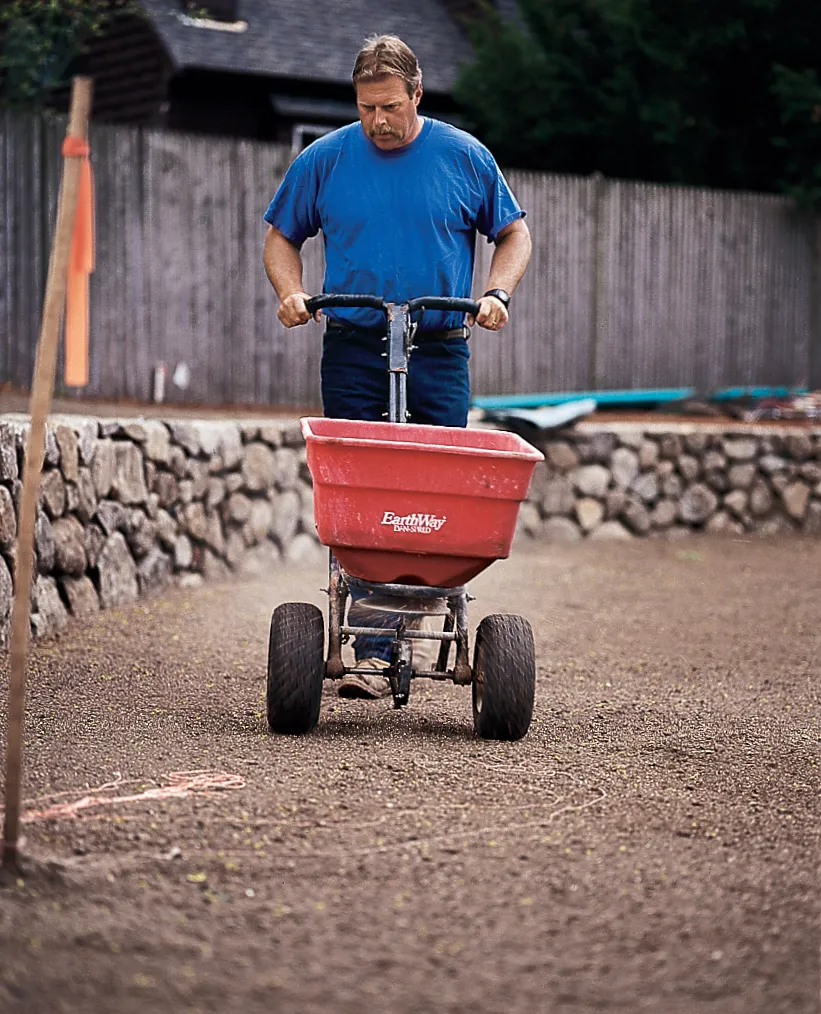
Based on your soil test results, you may need to spread a layer of finished compost over the tilled area. If your soil is clay-like, add a few inches of sand to improve drainage. Use a spreader to apply the appropriate starter fertilizer and lime if needed. Till these minerals into the soil thoroughly to ensure even distribution.
Level the Surface
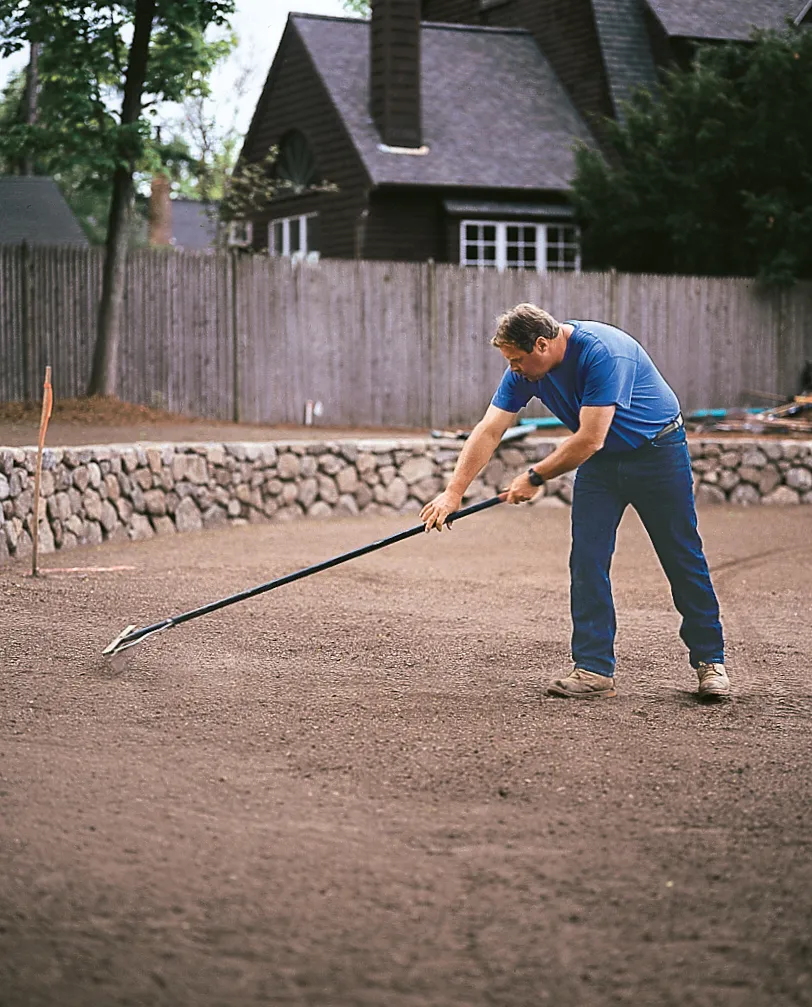
Use an iron rake to create a smooth, level surface. Fill in low areas and flatten higher ones so that the soil is consistently 1 inch below the grade of any paved surfaces like walkways or driveways. This step is key for ensuring proper drainage and a seamless look once the sod is installed. After leveling, lightly water the soil to dampen it before laying the sod.
Choosing the Right Sod for Your Climate
The best type of sod for your yard depends on your local climate, sun exposure, and soil conditions. In areas that favor cool-season grasses, like the Northeast, sod is a great way to avoid weed problems that come with spring seeding. Southern states, which favor warm-season grasses like Bermuda grass, zoysia grass, and centipede grass, often rely on sod, as these turf types cannot be grown from seed.
When ordering sod, consult with a local garden center or sod farm. They can recommend a mix of two or three turf grasses chosen for the ideal color, texture, and hardiness in your specific region. Be sure to mention if your yard has areas of partial or full shade, as this will affect the sod selection.
Step-by-Step Guide To Laying Sod
With your preparation complete, it’s time to lay the new sod. Follow these steps for the best results.
Lay the First Row of Sod
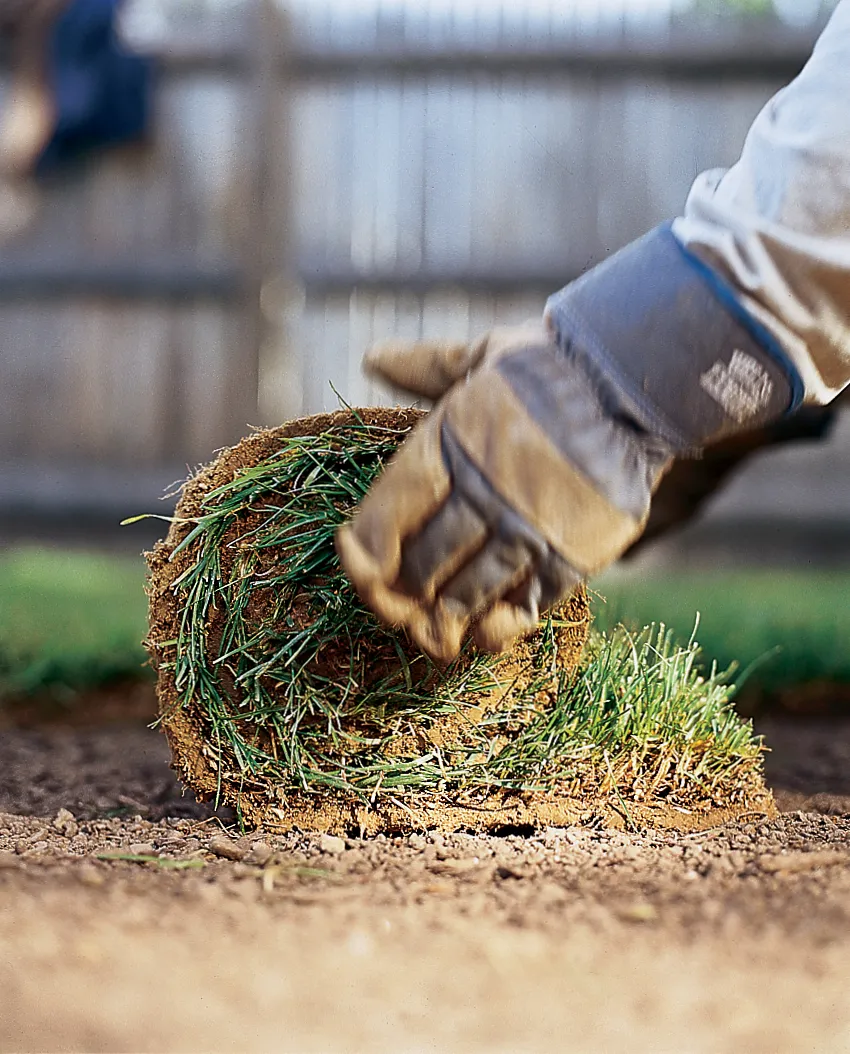
Start by identifying the longest straight edge in your yard, such as a fence line or driveway. Unroll the first patch of sod along this edge. As you work, avoid walking on the newly laid sod and rake out any footprints. Smooth out loose areas and make sure the sod is flat against the soil with no air pockets.
Lay Subsequent Rows
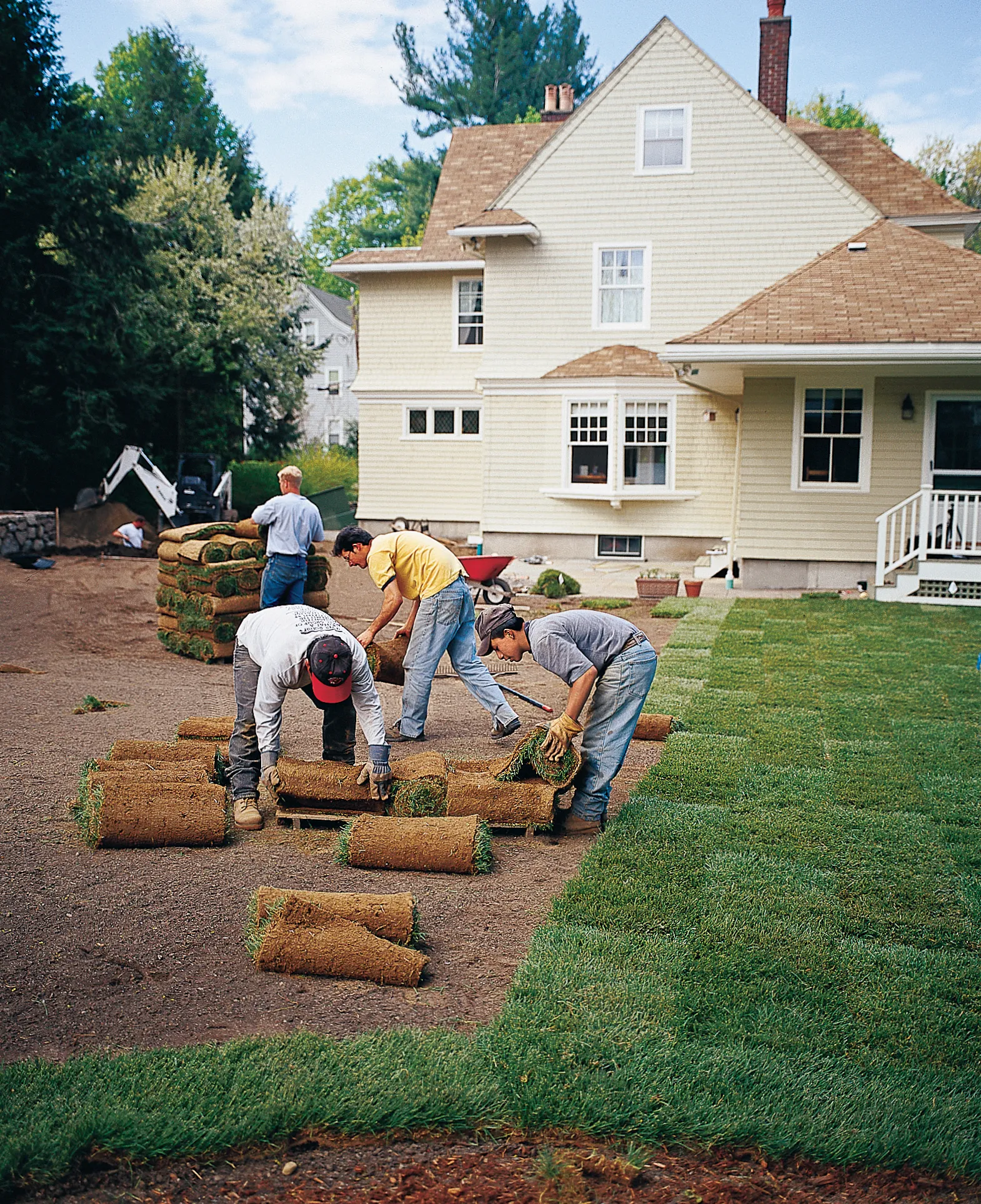
After laying the first row, cut the next piece in half with your sod-cutting knife. This staggered pattern, similar to laying bricks, helps prevent noticeable seams and reduces the risk of edges drying out. Continue laying rows, butting sections snugly against each other without overlapping. This tight fit is crucial for preventing dry edges and ensuring a seamless appearance.
Trim Sod Around Obstacles

Use your sod-cutting knife to trim pieces around planting beds, paved areas, and other obstacles. Cut out holes for inground sprinkler heads as needed. This attention to detail will give your lawn a clean, professional look.
Proper Watering Techniques for New Sod
Follow these watering best practices to keep your sod looking healthy.
Initial Watering Schedule

Immediately after installation, water your new lawn thoroughly. This initial soaking helps settle the soil and ensures good contact between the sod and the ground. For the first week, water daily, preferably in the morning. Watering during the day’s heat can lead to excessive evaporation, while evening watering may encourage fungal growth.
Long-Term Watering Practices
After the first week, gradually reduce the watering frequency. By the second week, water every other day, and by the third week, cut back to twice per week. Once established, your lawn will typically need about 1 inch of water per week, with increased watering during hot summer months. Using a soil probe can help you determine moisture levels below the surface so you don’t overhydrate.
Post-Installation Lawn Care and Maintenance
Once your sod has taken root, you still have to keep up with its maintenance.
Mowing Your New Sod
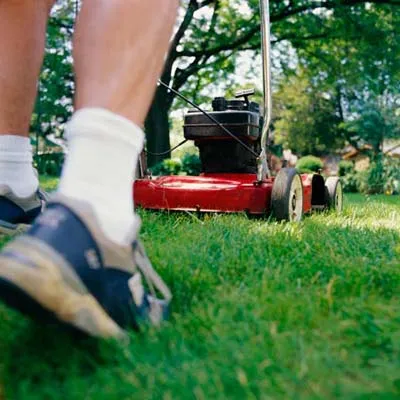
When your new grass reaches about 3 inches in height, it’s time for its first mow. Set your mower to cut the grass down to 2 inches. For this initial trim, use a walk-behind mower rather than a heavier ride-on type to avoid damaging the still-fragile turf. Be sure to bag the clippings for this first mow. In subsequent mowings, aim to cut off no more than 1/3 of the grass’s length at a time, and always use a sharp blade for clean cuts.
Fertilizing Your Lawn
About three to four weeks after installation, apply another round of starter fertilizer. This helps replenish nutrients that may have washed away during the initial heavy watering period. Follow the fertilizer manufacturer’s instructions for application rates and timing. Regular fertilization throughout the growing season will help maintain a lush, healthy lawn.
Troubleshooting Common Sod Issues
Even with careful installation and maintenance, you may encounter some challenges with your new sod. Here are some common issues and solutions:
- Dry patches: Increase watering in affected areas and check for proper soil contact.
- Gaps between pieces: Fill with topsoil and overseed to encourage growth.
- Yellowing grass: This may indicate overwatering or nutrient deficiency. Adjust your watering schedule and consider fertilizing.
- Weed growth: Hand-pull weeds promptly and consider applying an herbicide in future seasons.
If problems persist, contact a local lawn care professional for advice tailored to your specific situation.
Can You Lay Sod Without Tilling?
While it’s possible to lay sod without tilling, it’s generally not recommended. Tilling loosens compacted soil, improves drainage, and allows for better root penetration. However, if tilling isn’t feasible due to time constraints or site conditions, you can still lay sod by following these steps:
- Remove existing vegetation and debris.
- Rake the area thoroughly to create a level surface.
- Apply a thin layer of topsoil or compost to improve soil quality.
- Water the area lightly before laying sod.
Keep in mind that sod laid without tilling may take longer to establish strong roots and could be more prone to issues in the future. If you’re patching a lawn rather than installing a completely new one, you might be able to skip this step.
